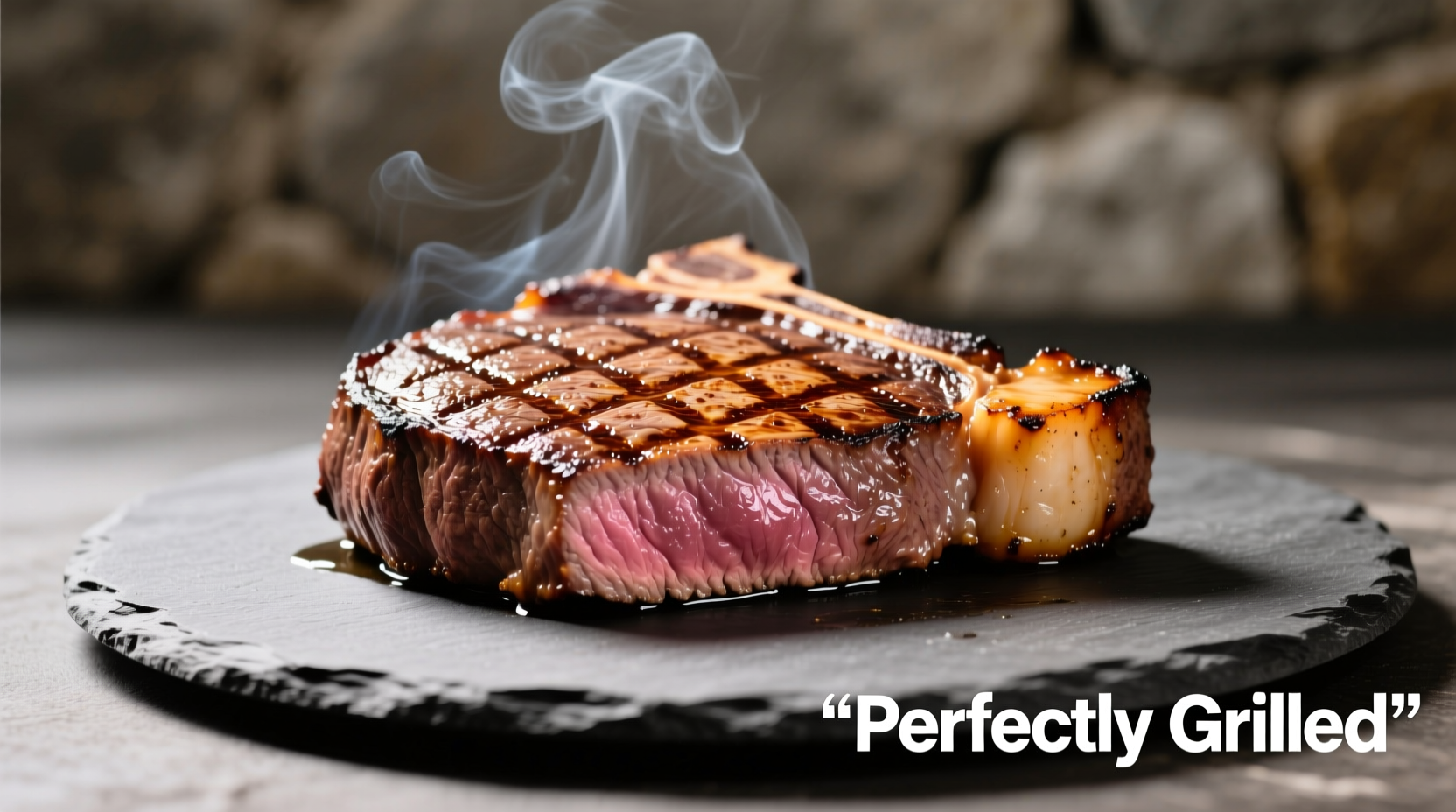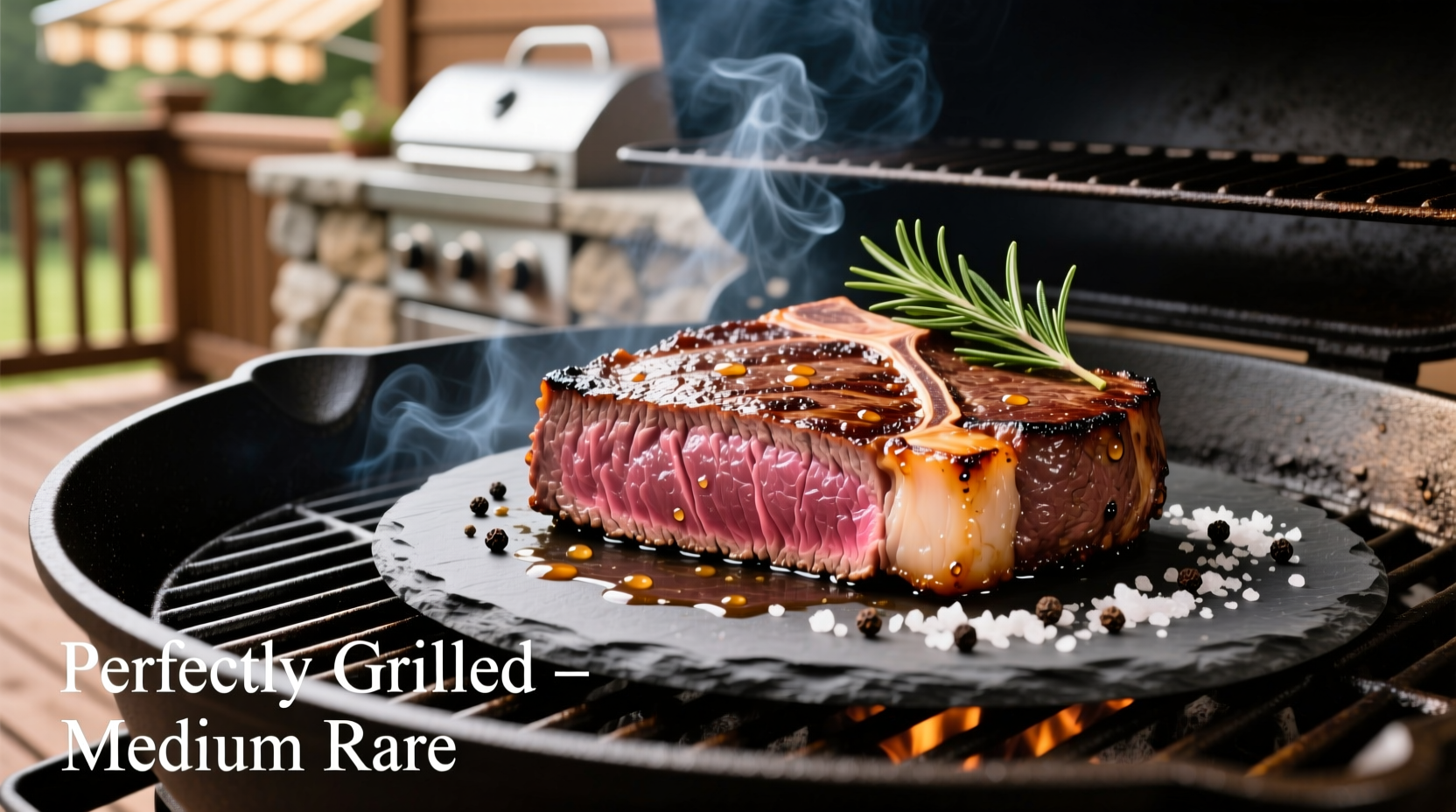Bring filet mignon to room temperature, season simply with coarse salt and freshly ground pepper, sear over direct high heat (450-500°F) for 2-3 minutes per side, then finish over indirect heat until reaching your desired internal temperature (125°F for medium-rare), followed by a 5-10 minute rest. This method delivers perfectly cooked, tender filet mignon with a flavorful crust every time.
Grilling filet mignon transforms this premium cut into a show-stopping meal, but many home cooks struggle with achieving restaurant-quality results. As a French-trained chef specializing in European cuisine techniques, I've perfected this method through years of practice and teaching. The secret lies not in complicated ingredients but in precise temperature control and understanding the meat's behavior on the grill.
Why Filet Mignon Requires Special Grilling Approach
Filet mignon's delicate texture and lower fat content compared to other steaks demand careful attention. Unlike ribeye or New York strip, filet mignon lacks marbling that provides forgiveness during cooking. According to the USDA Food Safety and Inspection Service, proper internal temperature is critical for both food safety and optimal texture. The American Meat Science Association confirms that precise temperature control prevents the lean filet from becoming dry or tough.
Essential Preparation: Setting Yourself Up for Success
What happens before the steak touches the grill determines your success. Begin with these critical steps:
- Temperature equilibrium: Remove filets from refrigerator 45-60 minutes before grilling. Cold meat cooks unevenly.
- Dry surface: Pat steaks thoroughly with paper towels. Moisture prevents proper searing.
- Simple seasoning: Generous coarse salt and freshly ground black pepper only. Complex rubs overwhelm filet's delicate flavor.
- Grill maintenance: Clean grates thoroughly and oil them to prevent sticking.
| Doneness Level | Internal Temperature | Visual & Texture Indicators | Resting Time |
|---|---|---|---|
| Rare | 120-125°F | Bright red center, very soft to touch | 5 minutes |
| Medium-rare | 125-130°F | Warm red center, tender with slight resistance | 7 minutes |
| Medium | 135-140°F | Pink center, firm but yielding | 8 minutes |
| Medium-well | 145-150°F | Slightly pink center, firm | 10 minutes |
Mastering the Two-Zone Grilling Method
Professional chefs use this technique for perfect filet mignon every time. Here's how to implement it:
- Create heat zones: Arrange charcoal on one side of grill or set one burner to high (direct heat) and others to medium-low (indirect heat).
- Preheat thoroughly: Allow 15-20 minutes for grill to reach 450-500°F over direct heat zone.
- Sear first: Place filets directly over high heat for 2-3 minutes per side to develop crust. Avoid moving them during searing.
- Finish cooking: Move to indirect heat zone and continue cooking until reaching target internal temperature.
- Monitor carefully: Use an instant-read thermometer for accuracy - don't guess based on time alone.

Critical Resting Phase: Why You Can't Skip This Step
Resting allows juices to redistribute throughout the meat. Cutting too soon releases precious juices onto your plate instead of staying in the steak. The Journal of Food Science confirms that resting for 5-10 minutes (depending on thickness) improves moisture retention by up to 30%. During this time, internal temperature will continue rising 5-10 degrees (carryover cooking), so remove filets from grill 5 degrees below target temperature.
Common Mistakes That Ruin Filet Mignon
Avoid these frequent errors that turn premium steak into disappointment:
- Overcomplicating seasoning: Filet's delicate flavor shines with simple salt and pepper.
- Skipping the dry step: Moisture on surface prevents proper Maillard reaction.
- Grill temperature too low: Fails to create flavorful crust, leading to steamed rather than seared meat.
- Flipping too often: Interrupts crust formation; flip only once during searing phase.
- Cutting too soon: Releases juices, resulting in dry steak.
Perfect Pairings for Grilled Filet Mignon
Complement your perfectly grilled filet with these classic accompaniments:
- Simple pan sauce: Deglaze the grill pan with red wine, add shallots and thyme, then finish with cold butter.
- Roasted vegetables: Asparagus, mushrooms, or heirloom tomatoes enhance the meal.
- Wine pairing: A medium-bodied Pinot Noir complements filet's delicate flavor without overpowering it.
Troubleshooting Guide for Perfect Results
Encountering issues? These solutions will rescue your steak:
- Problem: Steak sticking to grates
Solution: Ensure grill is properly preheated and grates are well-oiled before placing steaks. - Problem: Uneven cooking
Solution: Rotate steaks 90 degrees halfway through searing for even crosshatch pattern and consistent cooking. - Problem: Overcooked exterior, raw interior
Solution: Start with lower heat zone first, then finish with quick sear to develop crust.
Advanced Technique: Reverse Searing for Thicker Cuts
For filets thicker than 2 inches, consider reverse searing:
- Place steaks on indirect heat at 275°F until internal temperature reaches 110°F
- Remove and pat dry thoroughly
- Sear over maximum heat for 60-90 seconds per side
- Rest before serving
This method provides exceptional edge-to-edge doneness control for thicker cuts, as documented in culinary research from the Culinary Institute of America.
FAQ: Your Filet Mignon Grilling Questions Answered
Here are answers to the most common questions about grilling filet mignon:











 浙公网安备
33010002000092号
浙公网安备
33010002000092号 浙B2-20120091-4
浙B2-20120091-4